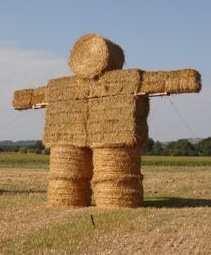Well the special ed one is actually pretty easy to explain. Has to do with chromosomes and how they're passed down. Since men at XY, having a recessive gene in the X chromosome means that male is going to express the recessive trait more often. Women have XX, so they would need to have both inhibit the recessive trait to express it. That is to say that not every handicap relies on the sex chromosomes, but but enough do that I bet it would cause the (supposed) overrepresentation.
That being said, you're using pretty weak logic there. What does homeless people and special ed students have to do with intelligence in the first place? Homelessness has literally nothing to do with education; there is so many unrelated factors that can go into causing someone to go homeless (like for example, social attitudes towards LGBT people might make me go homeless this summer

) that frankly it's kind of insulting to even imply that. And not everyone who is special needs is dumb. I don't want to play too much into the savant stereotype, but there are pretty damn smart autistic people. Not to mention people with severe physical handicaps, like Hawking, which fall under special needs but certainly aren't mentally handicapped.
Secondly, let's assume everything you said is biologically true in re to distributation of IQ. So what? Ignoring the issue that IQ isn't the catch all to determine intelligence as some people think it is, that still doesn't change that society itself is still largely pretty sexist, and pushes in favor of men over women in academia. Even if we are to accept your theory that men have a greater potentional to be smarter than women, that has little to do with employment standards in the real world. It's not like employers go around and measure every candidates' IQ scores, and pick whoever has the highest with no other factors being taken to consideration. If a specific woman X and specific man Y are compared together, and X has a higher IQ, in real life that still likely means Y will have greater oppritunities than X will simply because Y is Y and X is X.
Of course given that tone of the post I doubt you really want to engage in a conversation, but hey I guess this is more for the lurkers and myself.

 ) that frankly it's kind of insulting to even imply that. And not everyone who is special needs is dumb. I don't want to play too much into the savant stereotype, but there are pretty damn smart autistic people. Not to mention people with severe physical handicaps, like Hawking, which fall under special needs but certainly aren't mentally handicapped.
) that frankly it's kind of insulting to even imply that. And not everyone who is special needs is dumb. I don't want to play too much into the savant stereotype, but there are pretty damn smart autistic people. Not to mention people with severe physical handicaps, like Hawking, which fall under special needs but certainly aren't mentally handicapped.


 Some people however did say that in earlier posts in this thread, which is why I brought it back to that.
Some people however did say that in earlier posts in this thread, which is why I brought it back to that. ), buying birthday presents for my cousins. One can clearly see where the gendered sections are, but that's because of the toys, not so much because of the layout. Maybe it's separated more clearly in the USA, but here in Germany there's no blue-pink-divide.
), buying birthday presents for my cousins. One can clearly see where the gendered sections are, but that's because of the toys, not so much because of the layout. Maybe it's separated more clearly in the USA, but here in Germany there's no blue-pink-divide. 
